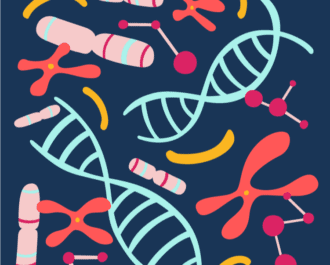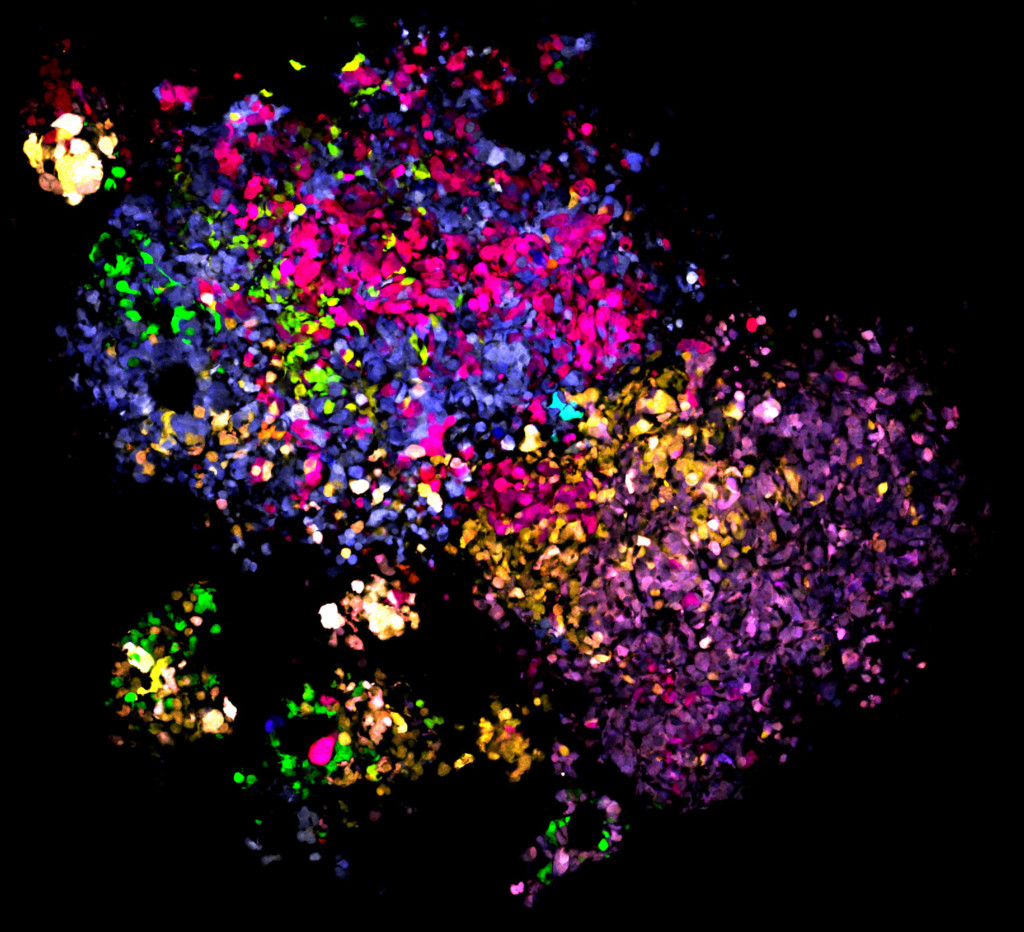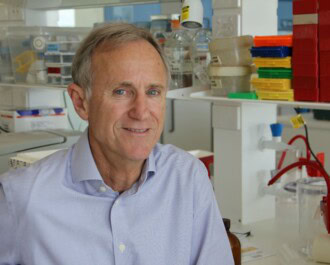
Triple negative breast cancer (TNBC) remains one of the most challenging to treat, with a high risk of metastasis to the liver, lungs, bones and brain. Due to the differences between the cancer cells that make up a breast tumour it remains unclear which cells are most likely to spread to other vital organs.
A new NBCF-funded study, led by Dr Delphine Merino (Olivia Newton-John Cancer Research Institute) has used optical barcode technology to ‘paint a picture’ of which TNBC cells spread during metastasis and has shed light on this problem. The study was able to provide information about how these cancer cells then adapted to their new home, and interacted with each other to spread to secondary organs.
“One of the biggest challenges in breast cancer research is identifying the different cancer cells in a tumour that are able to metastasise, so we can better predict which patient is likely to experience cancer recurrence and find new treatments,” said Dr Merino. “In this study, we were looking for genes that could be targeted by certain drugs to kill aggressive TNBC cells.”
To identify the genes in these different cell types, researchers used fluorescent proteins derived from jellyfish and sea anemones to tag individual TNBC cells with one of 31 different colours (see below). This technique is called LeGO and enables scientists to track the movement of the cells, the interactions they have with other cell types, and how often they divide and spread.
The team then used genetic sequencing to examine the genetic differences between the same coloured cancer cells found in the primary breast tumour and other organs. These differences were significant and, excitingly, unlocking potential new treatment opportunities. For example, the study found that a drug used for the treatment of auto-immune diseases could break up the cancer-cell groups in the lungs. Reducing the diversity and communication within groups of cancer cells led to their death and could be an effective therapy in the future.
“We are very grateful to the patients who donated precious samples to cancer research, and we are hoping that some of these results could be used to find better therapeutic strategies for patients with aggressive breast tumours and metastases,” said Dr Merino.
The Australian National Breast Cancer Foundation, Susan G. Komen foundation, Cancer Australia, Love Your Sister Foundation and Cancer Council Victoria supported this study.
More News Articles
View all News



